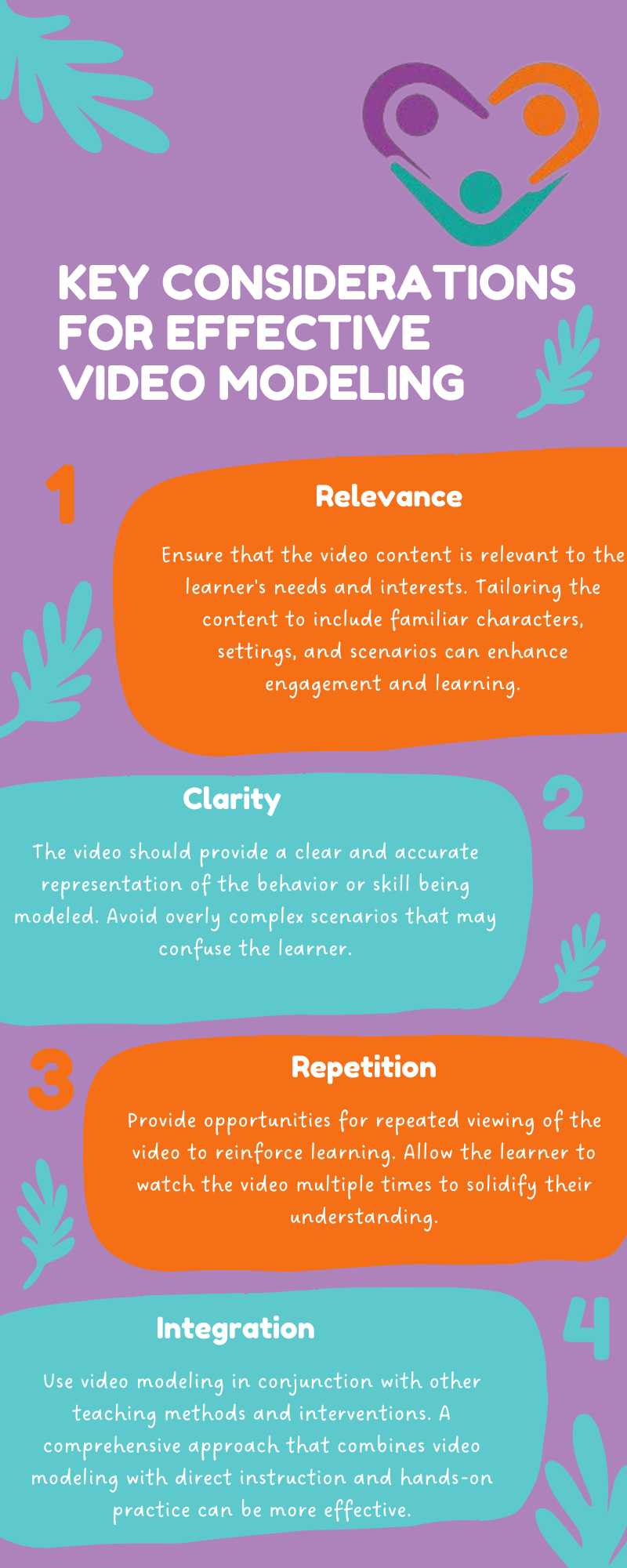Video modeling is a powerful tool used in Applied Behavior Analysis to help individuals learn new skills and behaviors. By showing someone a video of a behavior or skill being performed correctly, they can watch and imitate it, making learning more engaging and effective.
This method can be especially helpful for teaching social skills, daily living tasks, and other important activities.
Video modeling provides a clear and visual way to demonstrate what is expected, which can be easier to understand than just verbal instructions alone. It also allows learners to review and practice skills at their own pace, promoting better retention and mastery.
What is Video Modeling, and Why Is It Important?
Video modeling is a technique proven through numerous studies to be an effective method in the field of ABA therapy. It involves individuals viewing videos that showcase desired behaviors and then imitating those actions.
This visual learning approach has shown remarkable success in teaching social skills, play skills, and routines fostering independence in daily activities. By presenting behavioral examples through videos, individuals can better comprehend and emulate the demonstrated behaviors, leading to enhanced learning outcomes.
The benefits of incorporating video modeling in ABA therapy are manifold. This technique has demonstrated effectiveness in teaching play skills, conversation skills, and daily living routines to enhance independence in individuals with autism spectrum disorder.
Notably, video modeling facilitates skill acquisition by providing visual demonstrations that individuals can easily follow and replicate.
Moreover, video modeling offers the advantage of allowing learners to engage in independent learning without constant therapist intervention. For instance, tasks like learning a new skill or following a specific routine can be facilitated through video modeling, reducing the need for continuous verbal or physical prompts.
This autonomous learning approach empowers individuals to watch the videos and independently imitate the demonstrated behaviors, thereby fostering self-reliance and skill mastery.
Benefits of Video Modeling
Video modeling has revolutionized the way skills and behaviors are taught within Applied Behavior Analysis. By leveraging visual demonstrations, video modeling offers a unique and effective approach to instruction, particularly for individuals with autism.
This method not only enhances the learning experience but also provides numerous advantages over traditional teaching techniques.
With that out of the way, let’s now talk about its many benefits which are as follows:
Enhancing Skill Acquisition
One of the primary benefits of video modeling is its ability to facilitate skill acquisition. Individuals with autism often have difficulty learning new skills through traditional teaching methods.
Video modeling offers a visual representation of the desired behavior or skill, which can be easier to understand than verbal instructions alone. By observing the correct performance of a task or behavior in a video, learners can gain a clearer understanding of what is expected and how to achieve it.
According to research, video modeling can be particularly effective in teaching a variety of skills, from daily living tasks to academic skills and social interactions. The visual clarity provided by the videos allowed the children to see exactly how the tasks were performed, which helped them replicate the actions more accurately.
Increasing Engagement and Motivation
Video modeling can also increase engagement and motivation among learners. Traditional teaching methods, such as verbal instructions or physical prompts, may not always capture the learner’s interest. In contrast, videos can be highly engaging due to their dynamic and visually appealing nature.
The use of familiar characters, interactive content, and engaging scenarios can capture and hold the learner’s attention, making the learning process more enjoyable.
Additionally, video modeling allows for repeated viewing, which can reinforce learning. Learners can watch the video as many times as needed to fully understand the task or behavior being modeled.
Promoting Generalization and Transfer of Skills
Generalization refers to the ability to apply learned skills in different contexts or settings. Video modeling can aid in this process by demonstrating how a skill or behavior can be applied in various situations.
For example, a video might show a child practicing social greetings with peers in different environments, such as at home, at school, and in public settings. By observing these varied contexts, the learner can better understand how to use the skill across different situations.
Supporting Social Skills Development
Social skills are a critical area of focus for individuals with autism, as they often face challenges in understanding and engaging in social interactions. Video modeling provides a valuable tool for teaching and reinforcing social skills. By presenting social scenarios in a video format, learners can observe appropriate social behaviors and interactions.
This visual representation helps them understand the nuances of social communication, such as turn-taking, eye contact, and appropriate responses to social cues.
Facilitating Behavior Management
Video modeling can also play a role in behavior management. For individuals with autism, behavioral challenges such as aggression, self-injury, or non-compliance can be difficult to address using traditional methods alone. Video modeling can be used to demonstrate alternative, more appropriate behaviors that can replace undesirable ones.
For instance, if a child displays challenging behavior during transitions, a video model might show a peer handling transitions calmly and effectively. The child can then observe the desired behavior and practice it in similar situations.
This approach helps reinforce positive behavior and reduce the occurrence of challenging behaviors.
Key Considerations for Effective Video Modeling
To maximize the effectiveness of video modeling, several key considerations should be taken into account. These are as follows:

Conclusion
Video modeling has established itself as a valuable tool in Applied Behavior Analysis, offering significant benefits for individuals with autism. Its visual and engaging nature enhances skill acquisition, promotes generalization and transfer of skills, supports social skills development, and aids in behavior management.
As research continues to explore and validate the effectiveness of video modeling, its application in ABA interventions is likely to expand and evolve.
For parents, caregivers, and practitioners, incorporating video modeling into their approach can enhance the support and education provided to individuals with autism, ultimately contributing to their overall development and well-being.
If you’re interested in exploring how video modeling and other interventions can benefit those you care for, consider reaching out to Golden Care Therapy. Our dedicated team offers personalized support through various ABA centers in New Jersey, New York, Georgia, and Indiana. Contact us today to learn more about our services and how we can assist you in providing the best care for individuals with autism.
Sources:



